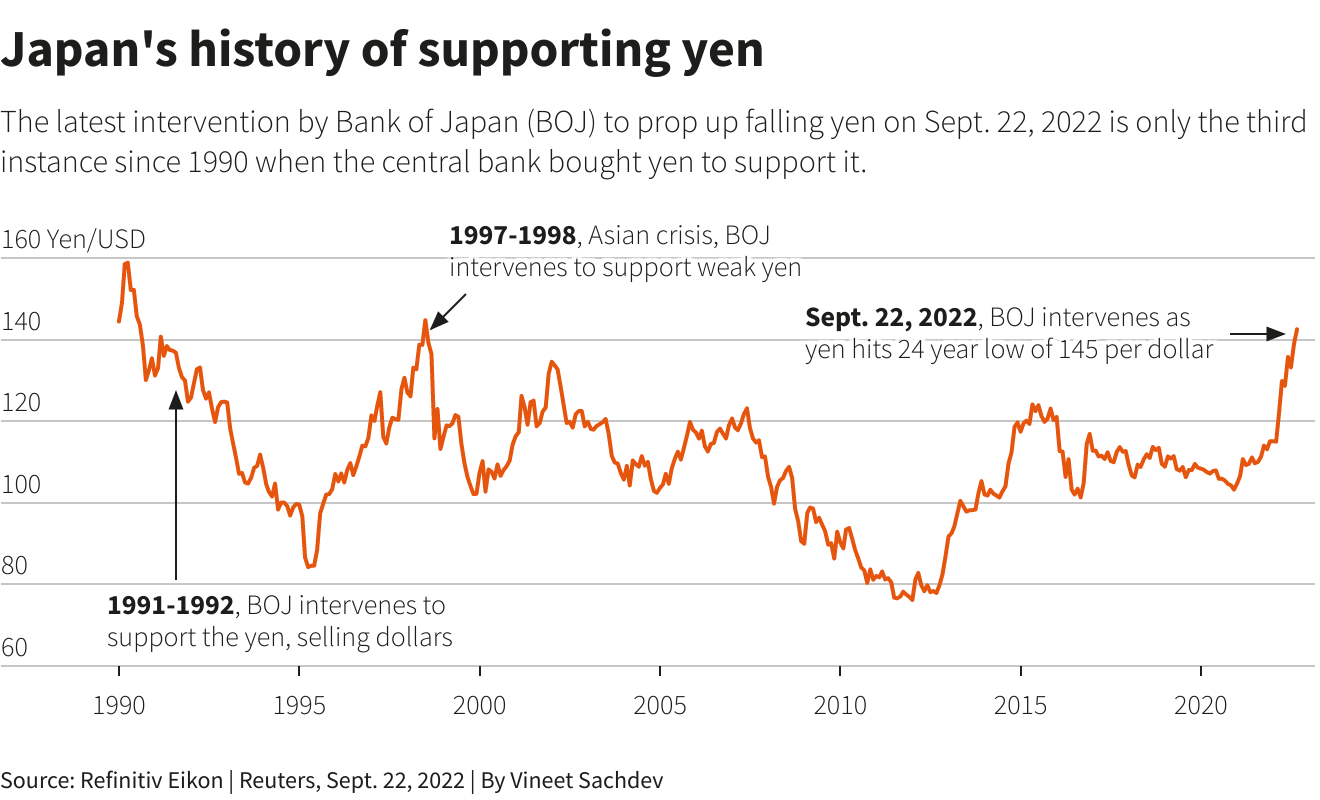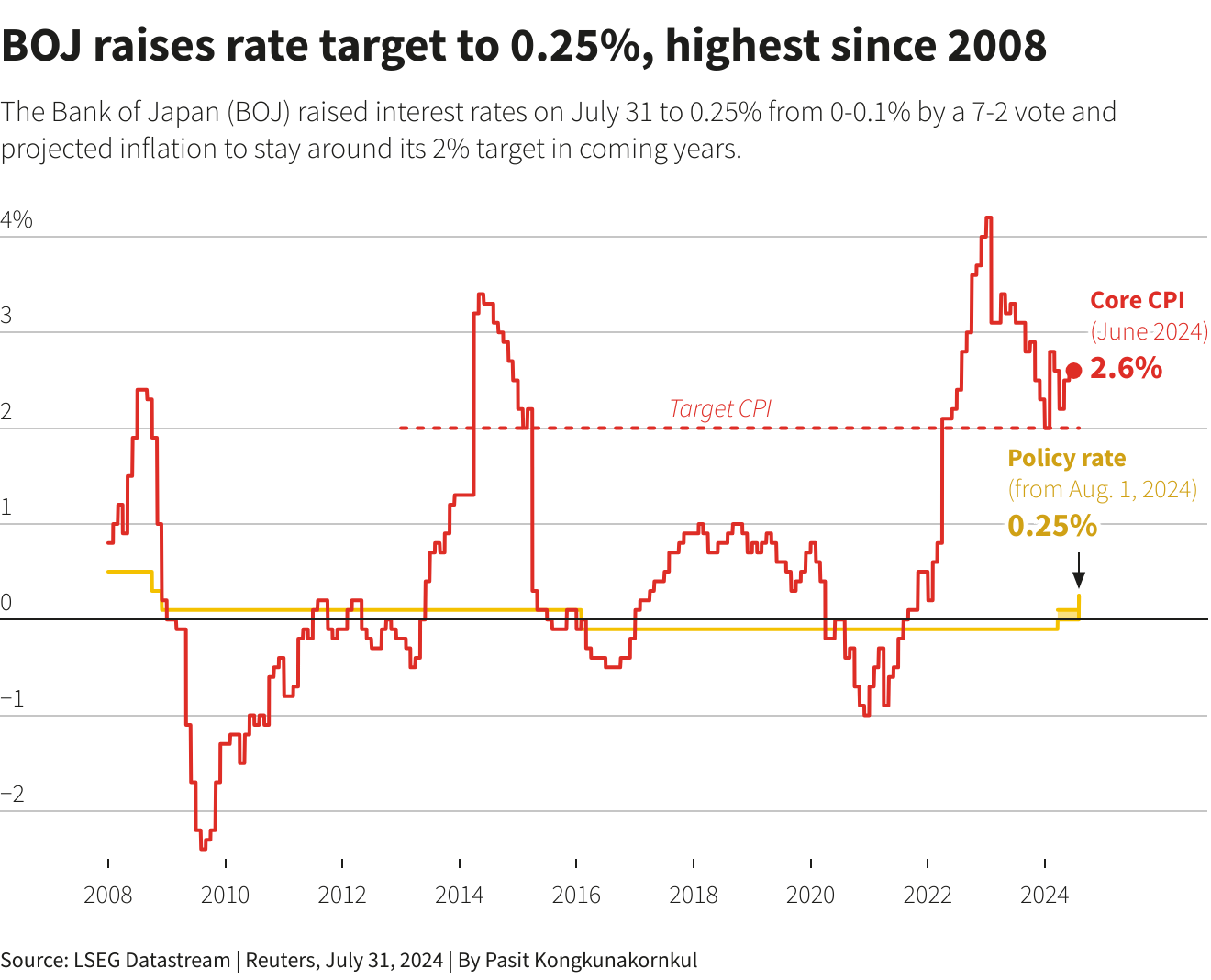LONDON, Aug 16 (Reuters) – If Japan’s government is thinking ahead, it may be planning to rein in its errant yen rather than propping it up.
A two year cat-and-mouse game between speculators and Japan’s authorities – involving mounting bets against the yen on yawning interest rate gaps with other G7 economies – ended this month with the cat licking its lips, even while suffering some indigestion.
Job done?
There’s a body of opinion that thinks it may end up working a little too well.
Harking back to long stretches of recent history in which the BOJ was either buying or selling yen every two to three years to corral its moves, there’s every chance the currency quickly overshoots again on the strong side.
No less than Nomura, Japan’s biggest brokerage, raised the very prospect before last week’s blowup.
“We may need to start considering potential FX interventions by the MOF (Ministry of Finance) to limit the yen strength rather than weakness,” its macro research team told clients on Aug. 2, adding that wasn’t yet its “base case.”
“Intervention history tells us that after the yen buying interventions, there followed yen selling interventions to limit the yen strengthening too much.”
TENDENCY TO OVERSHOOT
The most celebrated currency intervention episodes were the collective G5 and G7 forays in 1985 and 1987 – with the former Plaza Accord to weaken the dollar followed two years later by the Louvre Accord to shore up the greenback. Dollar/yen was at the heart of those swings.
But yen-specific interventions by Japanese authorities alternately saw official buying and selling of yen at extremes between 150 and 75 per dollar every few years for the two decades after the property bust of the 1990s.
The extremes of Japan’s low interest rates since that crash and the resulting inflation and deflation of speculative carry trades paved the way for the volatility and overshoots in both directions during that period.
The routine “ebb” was yen weakness and the “flow” was exaggerated snapbacks in times of stress or volatility as carry trades were popped, or Japanese investors fled repatriated overseas investments. And that was a key reason the yen behaved as a “haven” during any market shocks of that period – something that compounded the moves into the mix.
But after the 2007-2008 Great Financial Crisis a decade ensued where interest rates in virtually all the Group of Seven members gravitated close to Japan’s zero level – smothering carry-trade temptations and allowing a relatively stable yen exchange rate to effectively sideline the BOJ’s hyperactive currency desk.
In fact, there was no confirmed intervention between the extraordinary earthquake and tsunami shock of 2011 and 2022 – when the post-pandemic, post-Ukraine invasion interest rate spikes elsewhere isolated Japan back at the zero level once again – refiring the carry trade into the bargain.
The wild swings of the past few weeks are just a reminder of the currency’s inherent tendency to overshoot.

NORMALIZED YIELD GAPS?
Spin ahead, and it’s not hard to see where a burst of yen strength might come from here. As U.S. and other G7 policy rates finally tumble and the carry trade clears out, Japan may feel emboldened to “normalize” further – increasingly confident its decades of post-1990 deflation are over.

Two-year benchmark Japanese bond yields have recoiled back below 30 basis points from 15-year highs close to 50 bps at the start of the month. Given that alone, any suggestion of higher rates will warrant a significant repricing.
But the yield gap with the rest of the G7 already has been waning.
Two-year spreads versus U.S. Treasuries have fallen by 1.1 percentage points in just over three months, with the dollar/yen only reacting with a three-month lag to that turnaround. It would take another 1.7 point squeeze of that spread to get back to a 10-year average – and that could happen relatively quickly if it’s coming from both sides.
But if yen strength goes too far too fast – then there’s always intervention to calm it down.
The opinions expressed here are those of the author, a columnist for Reuters.
Sign up here.
by Mike Dolan X: @reutersMikeD; Editing by Paul Simao
Our Standards: The Thomson Reuters Trust Principles.
Opinions expressed are those of the author. They do not reflect the views of Reuters News, which, under the Trust Principles, is committed to integrity, independence, and freedom from bias.





